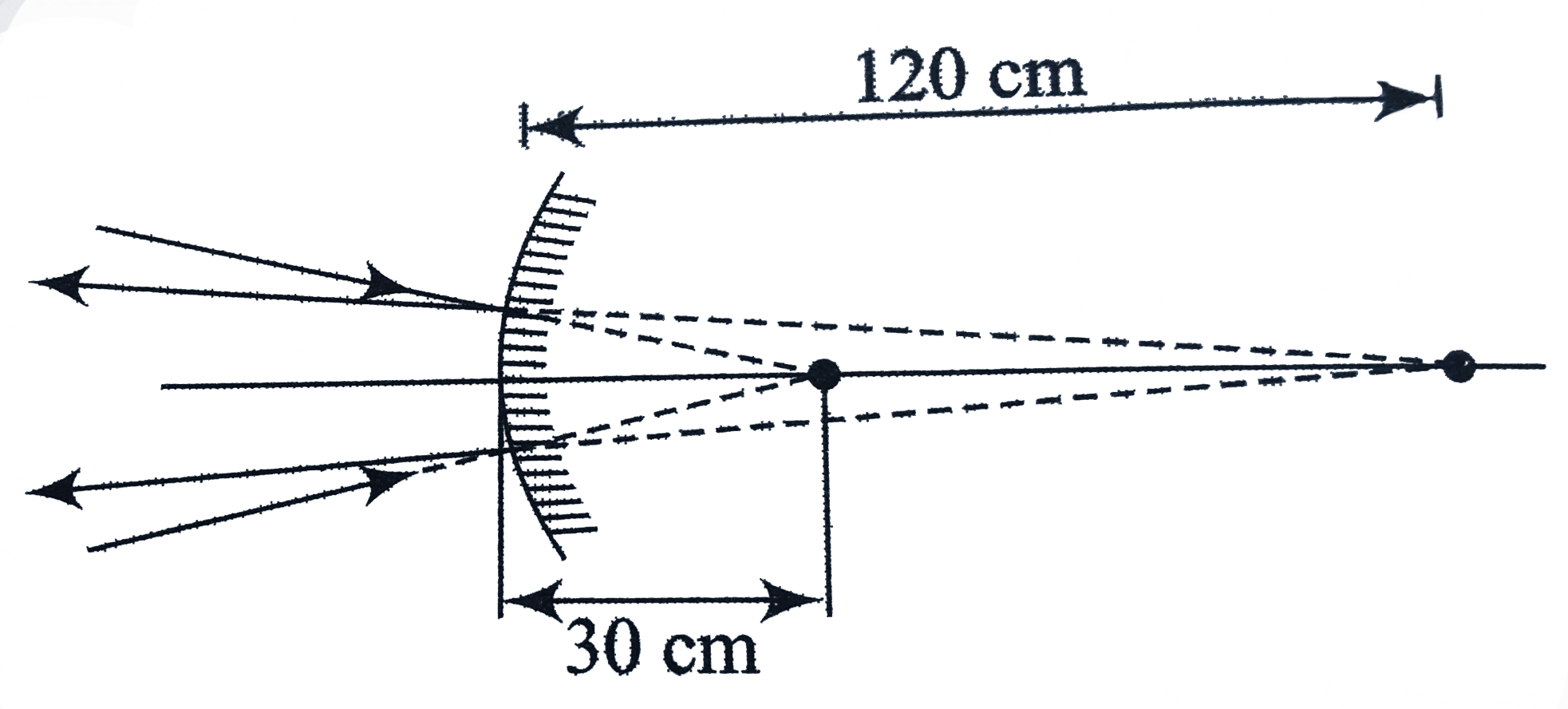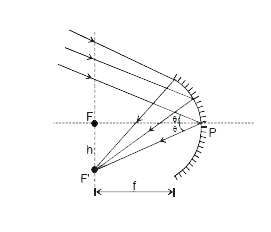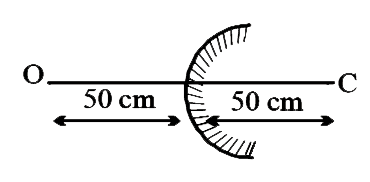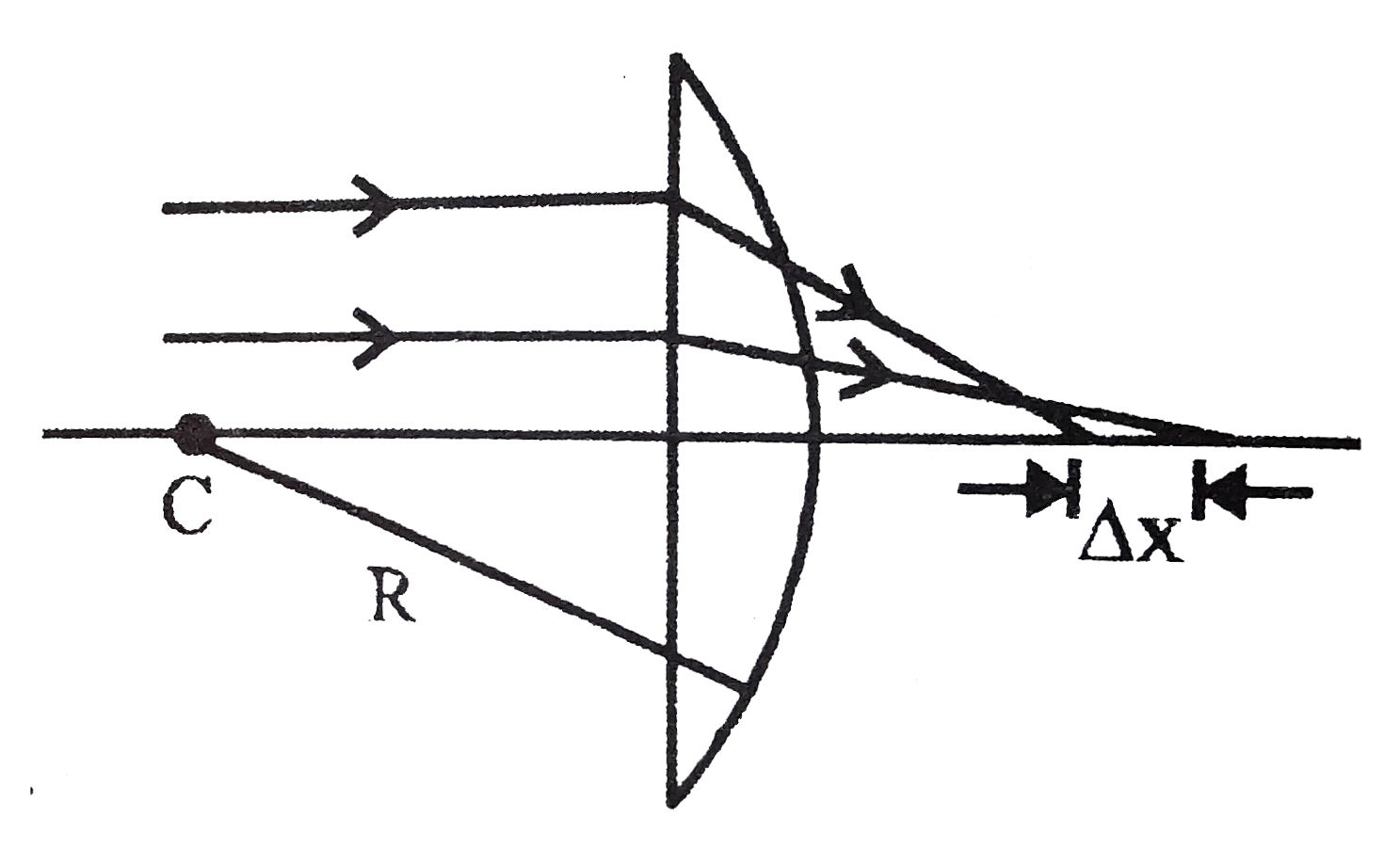Two rays are incident on a spherical mirror of radius R = 5 cm parallel to its optical axis at distances and Determine the distance between the points at which these rays intersect the optical axis after being reflected at the mirror.
The correct Answer is:
Step by step video, text & image solution for Two rays are incident on a spherical mirror of radius R = 5 cm parallel to its optical axis at distances h_1 = 0.5 cm and h_2 = 3 cm Determine the distance Deltax between the points at which these rays intersect the optical axis after being reflected at the mirror. by Physics experts to help you in doubts & scoring excellent marks in Class 12 exams.
Topper's Solved these Questions
- BOOK - RESONANCECHAPTER - DAILY PRACTICE PROBLEMEXERCISE - DPP No.1520videos
DAILY PRACTICE PROBLEM
- BOOK - RESONANCECHAPTER - DAILY PRACTICE PROBLEMEXERCISE - DPP No.169videos
DAILY PRACTICE PROBLEM
- BOOK - RESONANCECHAPTER - DAILY PRACTICE PROBLEMEXERCISE - DPP No.1320videos
DAILY PRACTICE PROBLEM
- BOOK - RESONANCECHAPTER - CURRENT ELECTRICITYEXERCISE - High Level Problems (HIP)21videos
CURRENT ELECTRICITY
- BOOK - RESONANCECHAPTER - ELECTRO MAGNETIC WAVESEXERCISE - Exercise 327videos
ELECTRO MAGNETIC WAVES
Similar Questions
A converging beam of light rays in incident on a concave spherical mirror whose radius of curvature is 0.8m. Determine the position of the point on the optical axis of the mirror where the reflected rays intersect, if the extensions of the incident rays intersect the optical axis 40cm form the mirror's pole.
View SolutionConverging rays are incident ono a convex spherical mirror so that their extensions intersect 30cm behind the mirror on the optical axis. The reflected rays form a diverging beam so that their extensions intersect the optical axis 1.2 m from the mirror. Determine the focal length of the mirror.
 View Solution
View Solution
Knowledge Check
- Question 1 - Select One
A ray of light is incident on a concave mirror . It is parallel to the principal axis and its height from principal axis is equal to the focal length of the mirror. The ratio of the distance of point B to the distance of the focus from the centre of curvature is (AB is the reflected ray)
_E01_055_Q01.png) A2√3B√32C23D12
A2√3B√32C23D12
Find distance on focal plane where parallel and paraxial rays which are not parallel to optic axis, meet after reflection.
 View Solution
View SolutionA converging lens and a diverging mirror are placed at a separation of 15 cm. The focal length of the lens is 25 cm and that of the mirror is 40 cm. Where should a point source be placed between the lens and the mirror so that the light, after getting reflected by the mirror and then getting transmitted by the lens, comes out parallel to the principal axis ?
View SolutionA parallel beam of rays is incident on a consisting pf three thin lenses with a common optical axis. The focal length of the lenses are equal to f1=+10cmandf2=−20cm,andf3=+9cm respectively. The distance between the first and the second lens is 15cm and between the second and the third is 5cm. Find the position of the point at which the beam converges when it leaves the system of lenses.
View SolutionThere is a convex mirror of radius 50 cm. The image of a point at a distance 50 cm from the pole of mirror on its axis will be formed at :
 View Solution
View SolutionSunlight is incident on a concave mirror, parallel to its principal axis. The image is formed at a distance of 12cm from the pole. Find the radius of curvature of the mirror.
View SolutionTwo rays travelling parallel to the principal axis strike a thick large plano-convex lens having a refracive index of 1.60.If the spherical face has a radius of curvature of magnitude 20.0cm and th two rays are h1=0.500cmand h2=12.0cm from the principal axis ,find the difference in the positions where they cross the principal axis .Assume that the ray incident at height h2is incident at the periphery.
 View Solution
View SolutionTwo plane mirrors X and Y are placed parallel to each other and are separated by a distance of 20 cm. An object is placed between the two mirrors at a distance 5 cm from the mirror X. Find the distance of the first three image formed in the mirror X.
View Solution

